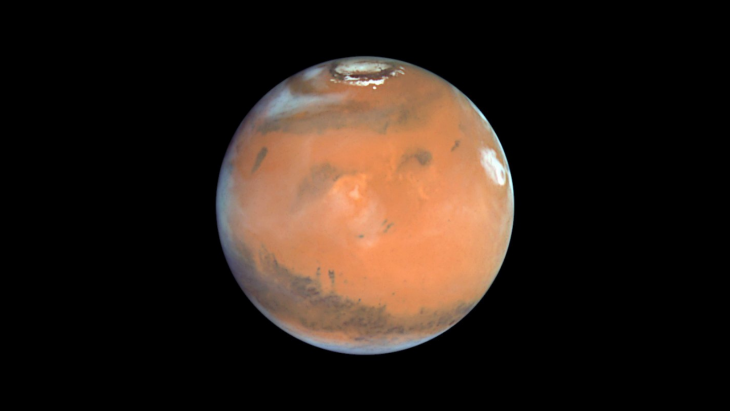Imagine what it would be like to be an astronaut landing on Mars for the first time. The red planet has little more than dust and rocks as well as some frozen water and gases in the air. If you wanted to build a shelter or structure, you would need to carry the materials from Earth in your cramped spaceship.
What if we could make building materials by mixing biology with Martian chemistry? It might sound crazy, but scientists at the University of Manchester and the University of Oslo wanted to test whether different products of the human body, such as blood, could be mixed with Martian rock dust called regolith to make new materials.
Though this might sound like vampirism, humans have been using blood for thousands of years to make different binders and adhesives. Slaughterhouses in the 1900s collected animal blood to make a kind of glue used to hold together plywood and even bricks. Though sending cows to Mars would be too expensive, the crew on a mission to Mars can donate their own blood instead.
One major part of blood is blood plasma which is full of a sticky protein known as human serum albumin. The average healthy adult produces 12 to 25 grams of plasma a day and can donate their plasma as often as every few days, similar to donating blood. Because humans can donate a lot of plasma, the scientists in this study were curious if they could mix human serum albumin with the regolith on Mars to create concrete.
The team used a mixture of dust and rock similar to Mars’s regolith and put it into a plastic syringe. These syringes are cheap and light, making them good options for space missions. Using a second syringe, a mixture of human serum albumin and water was injected into the regolith and then heated up to 65oC to finish setting the blood concrete. Concrete samples were then loaded into a machine that squeezed them between two large disks. By measuring how much pressure was needed to crush a sample or cause it to crack, the researchers were able to identify the toughest concrete mixtures.
The researchers found that a mixture of regolith and 35% serum albumin produced blood concrete that was tougher than brick mortar from the hardware store. This material was used to create small, 3D-printed structures that could easily support the weight of a person on Mars. Surprisingly, the blood concrete was also a good adhesive for glass. When tested side-by-side with super glue, the blood concrete was harder to scrape off and bound the glass more tightly.
The key to the strength of the blood concrete was in the human serum albumin. When heated up, proteins go through a chemical change and change their structure. The new structure formed by human serum albumin was very sticky and bound tightly to the regolith, making the concrete extra strong.
Another way to change a protein’s structure is to treat it with different chemicals like urea. Urea is found in human urine and is very cheap and easy to produce thanks to the crew members. The research team collected urea from human urine and mixed this with human serum albumin and regolith to make an even stronger concrete. This material was more than twice as strong as brick mortar and was also denser. A denser material will act as a better shield against dangerous space radiation and therefore will make a better shelter.
Going to Mars will be incredibly difficult and costly. The authors propose that recycling human products into needed materials will cut costs and minimize waste on these missions. In the end, harvesting materials from Mars can be as tough as getting blood from a stone. Perhaps putting blood into stone will get us a few steps closer.


